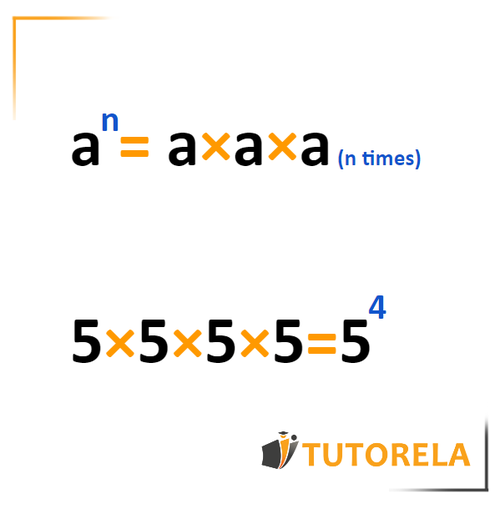Exponents are a way to write the multiplication of a term by itself several times in a shortened form.
The number that is multiplied by itself is called the base, while the number of times the base is multiplied is called the exponent.

... (n times)
For example:
is the base, while is the exponent.
In this case, the number is multiplied by itself times and, therefore, it is expressed as to the fourth power or to the power of .